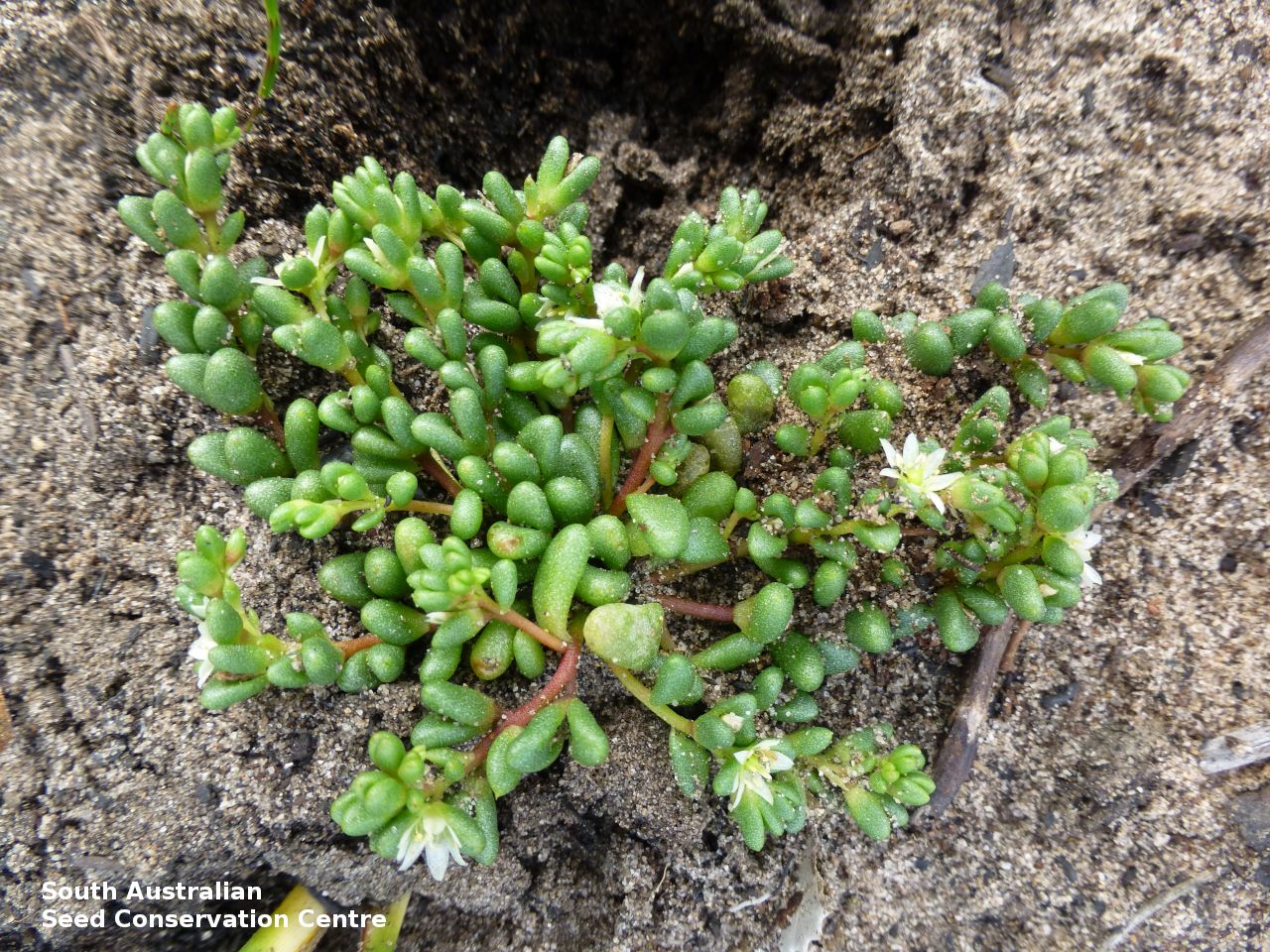
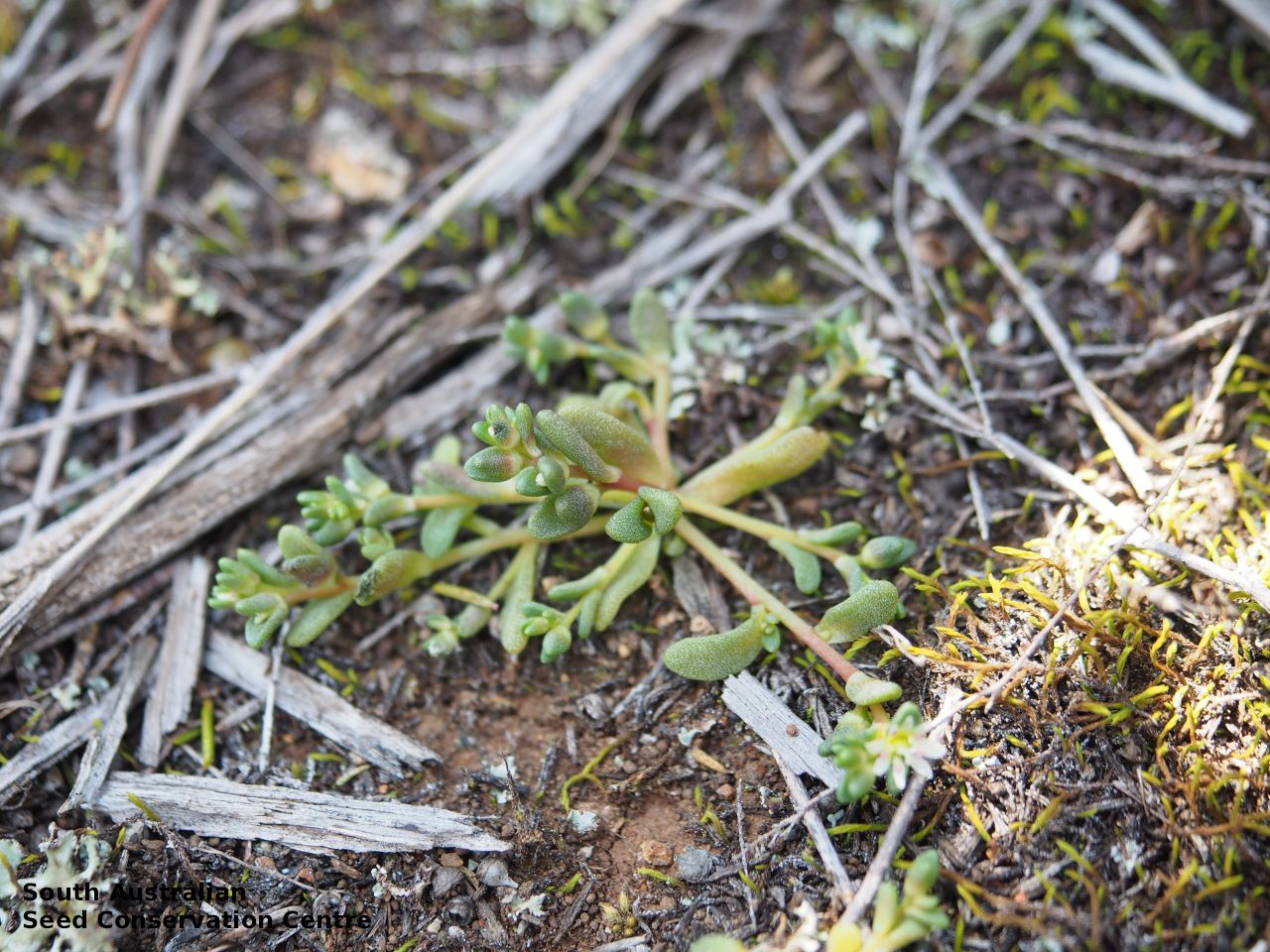
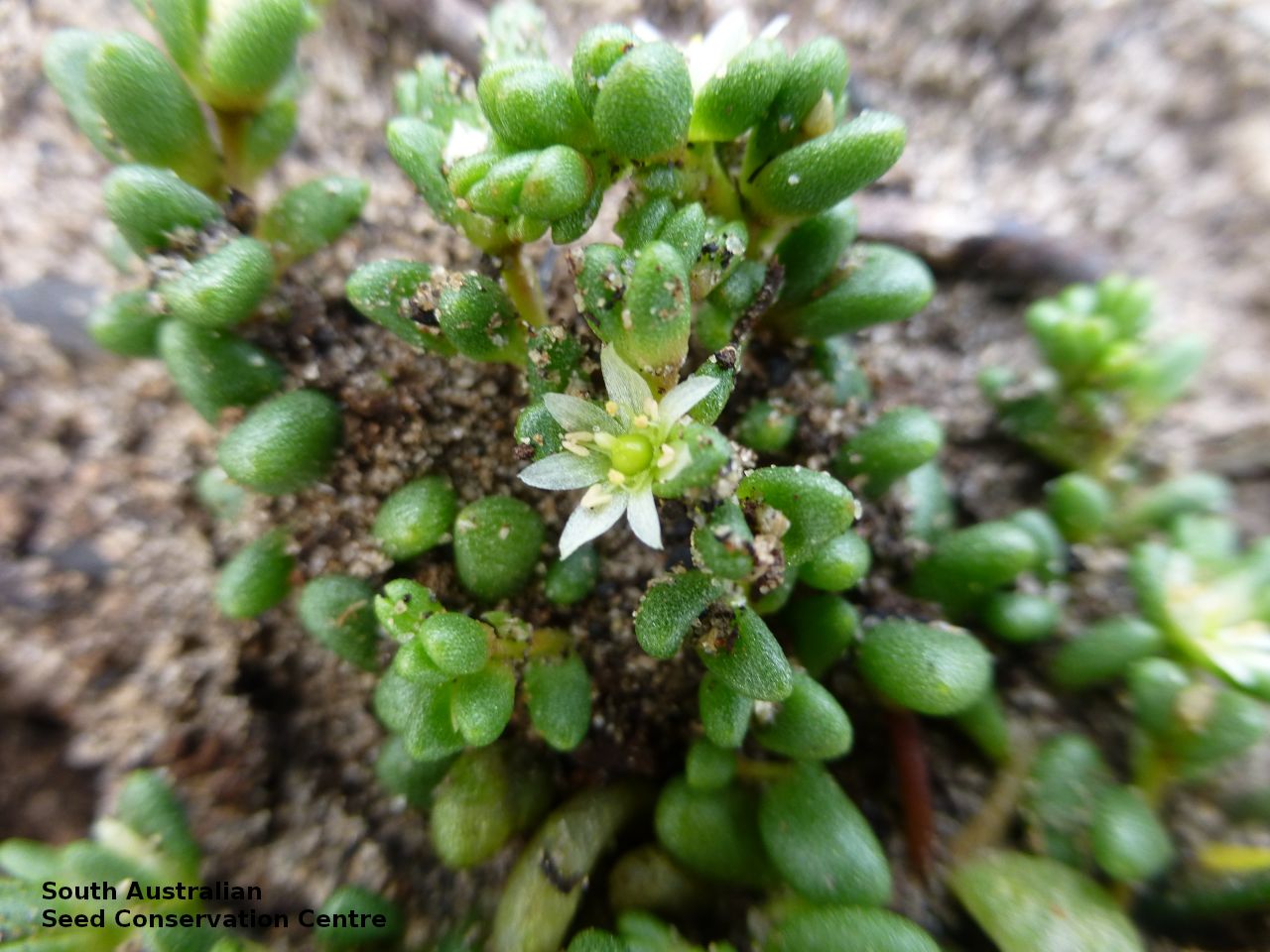
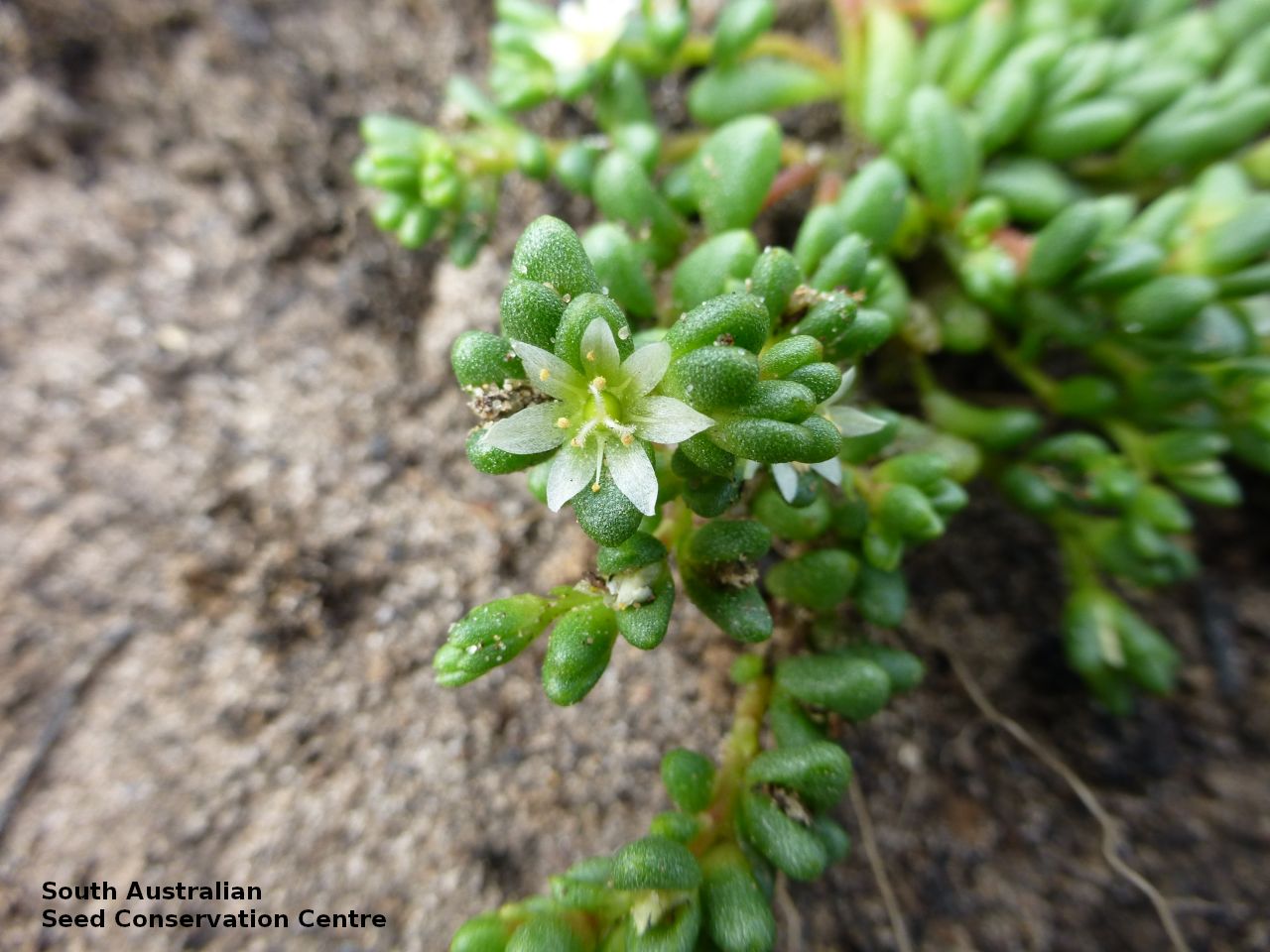
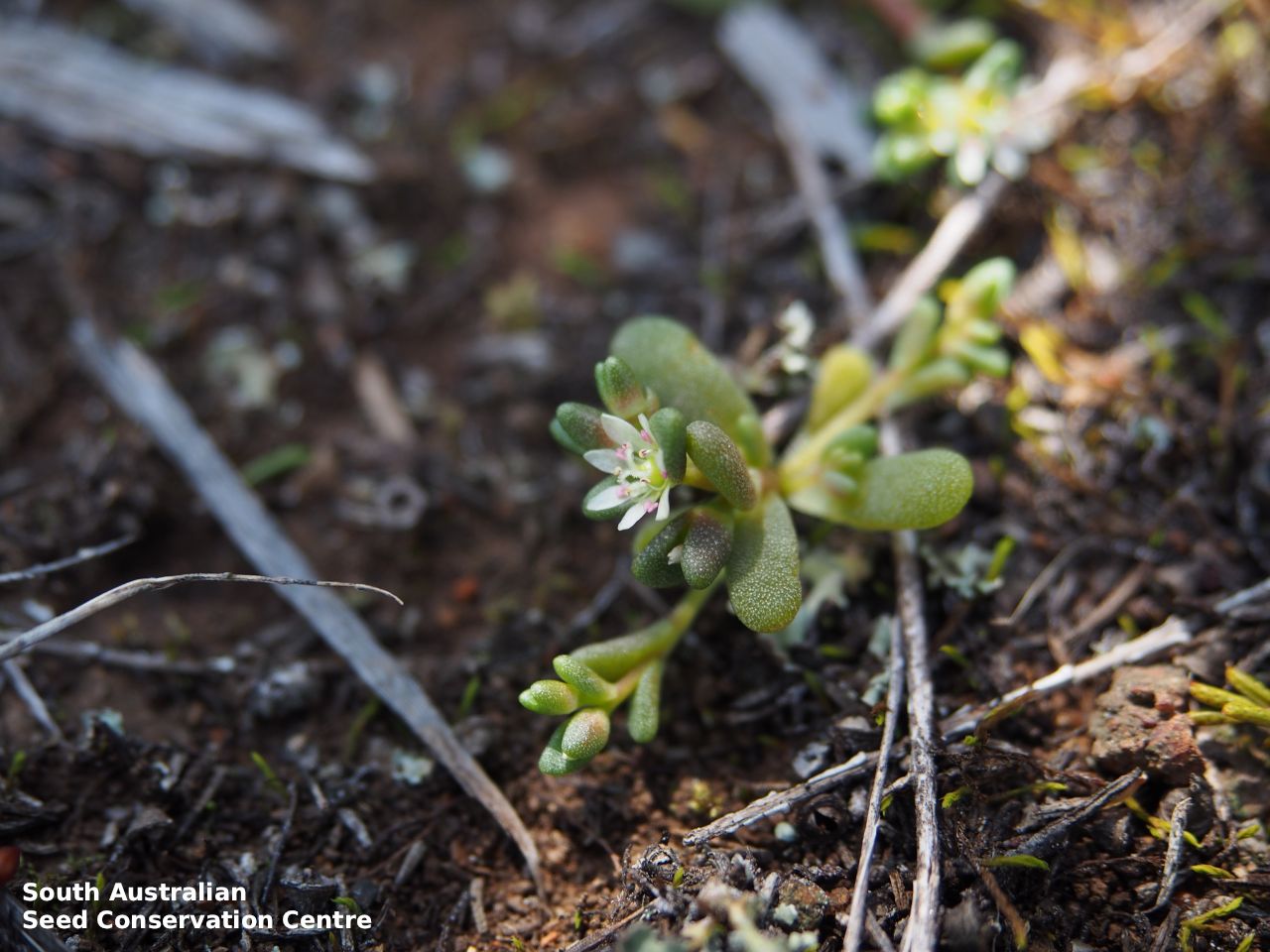
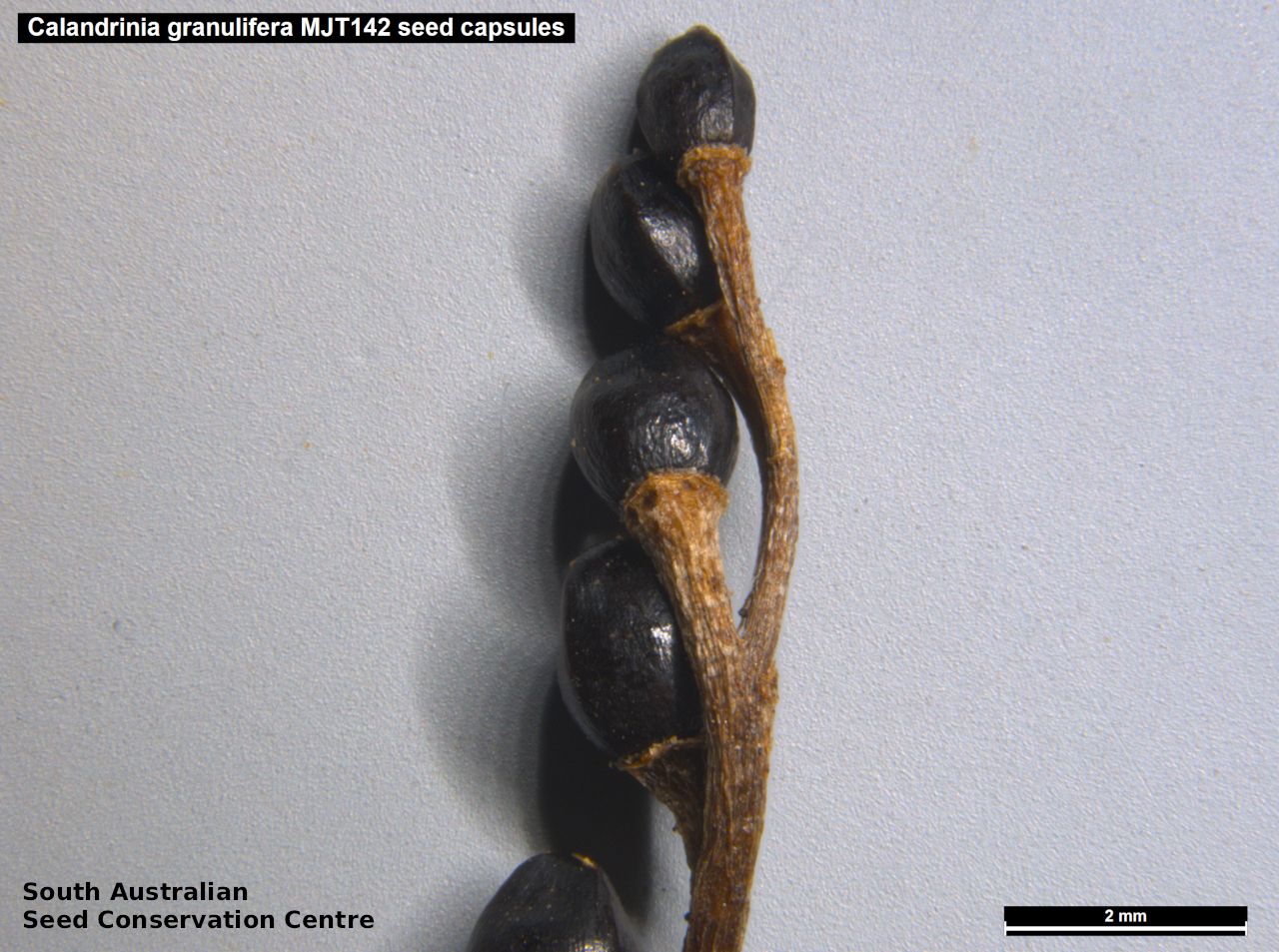
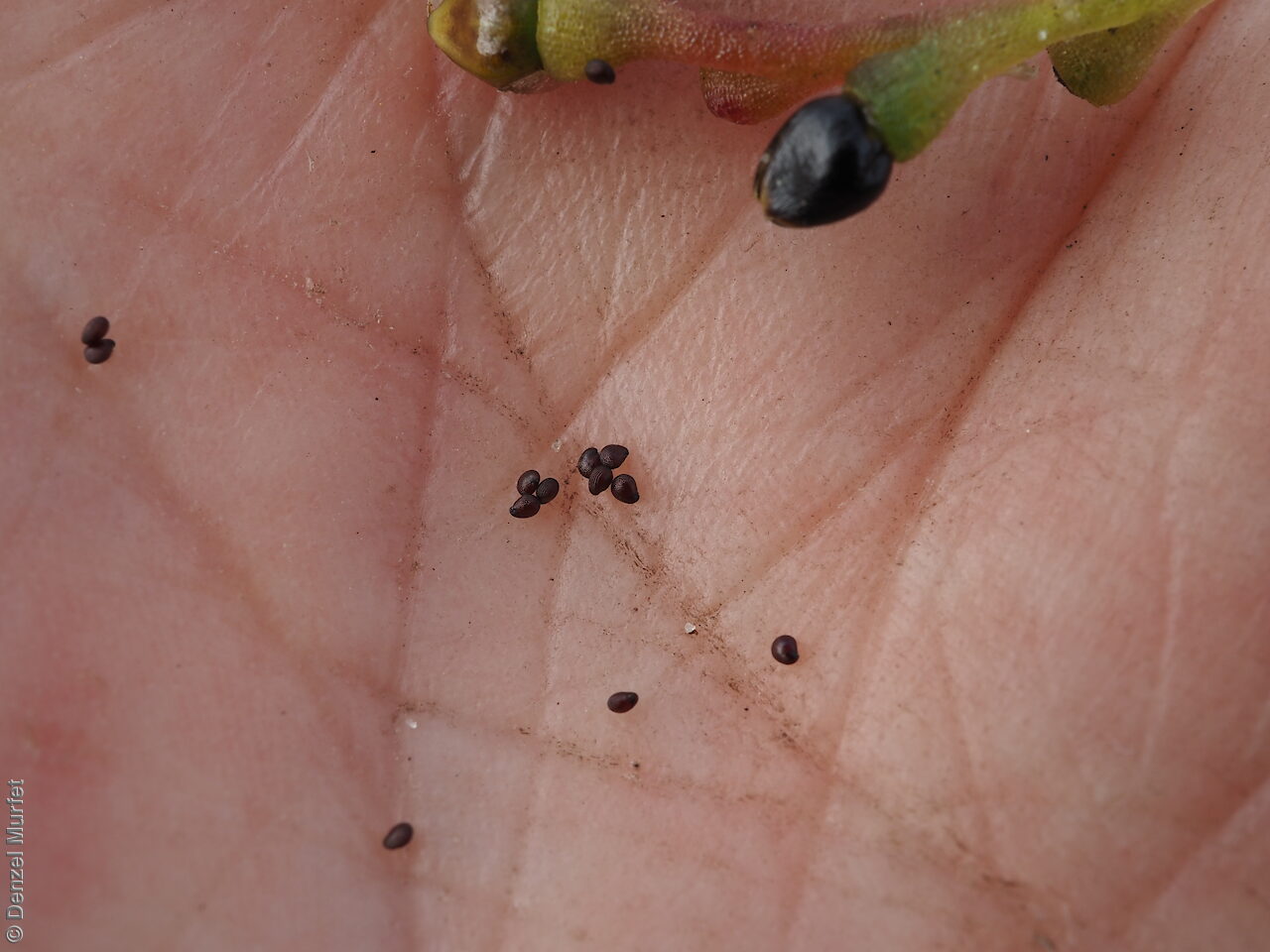
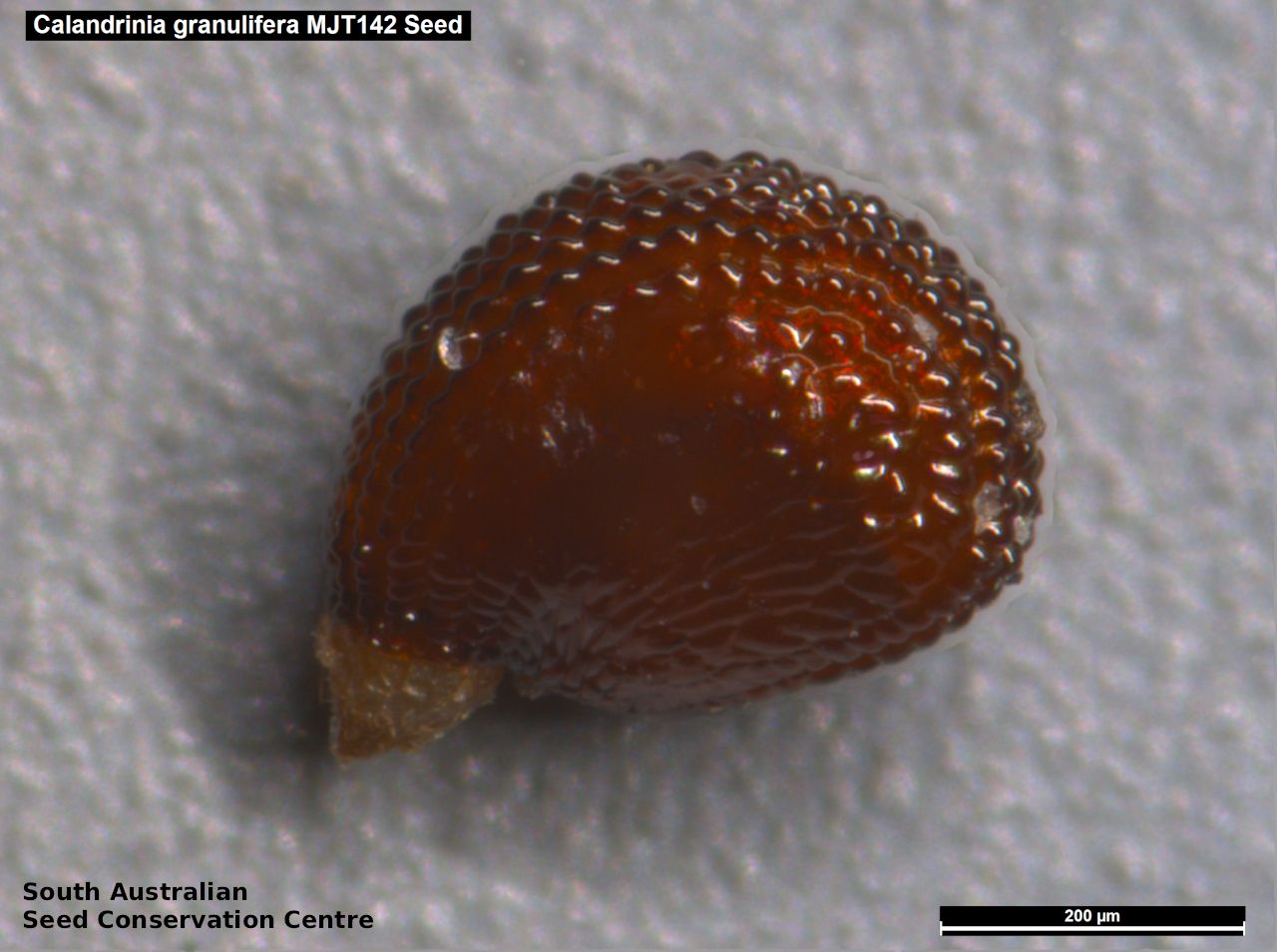
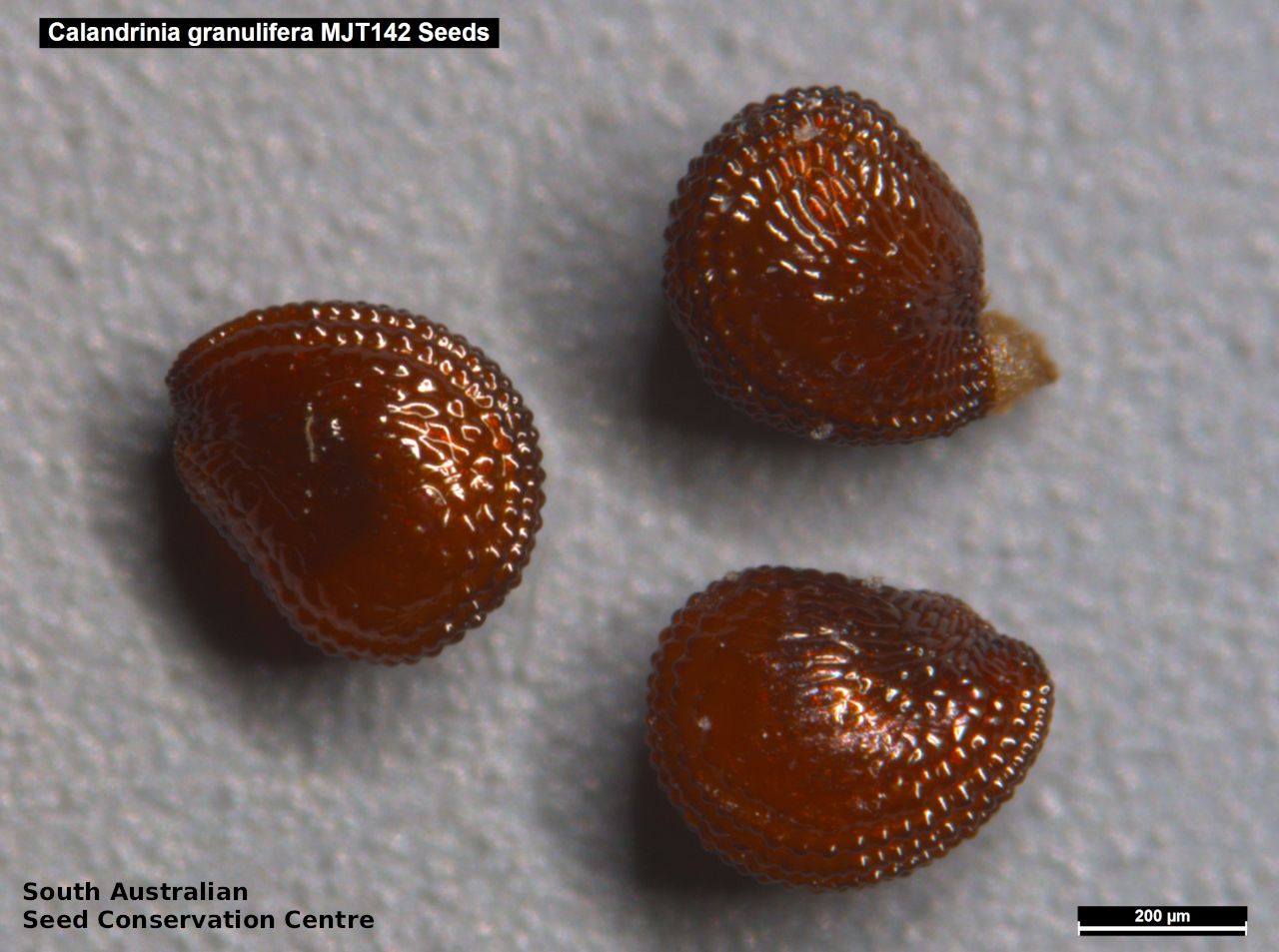

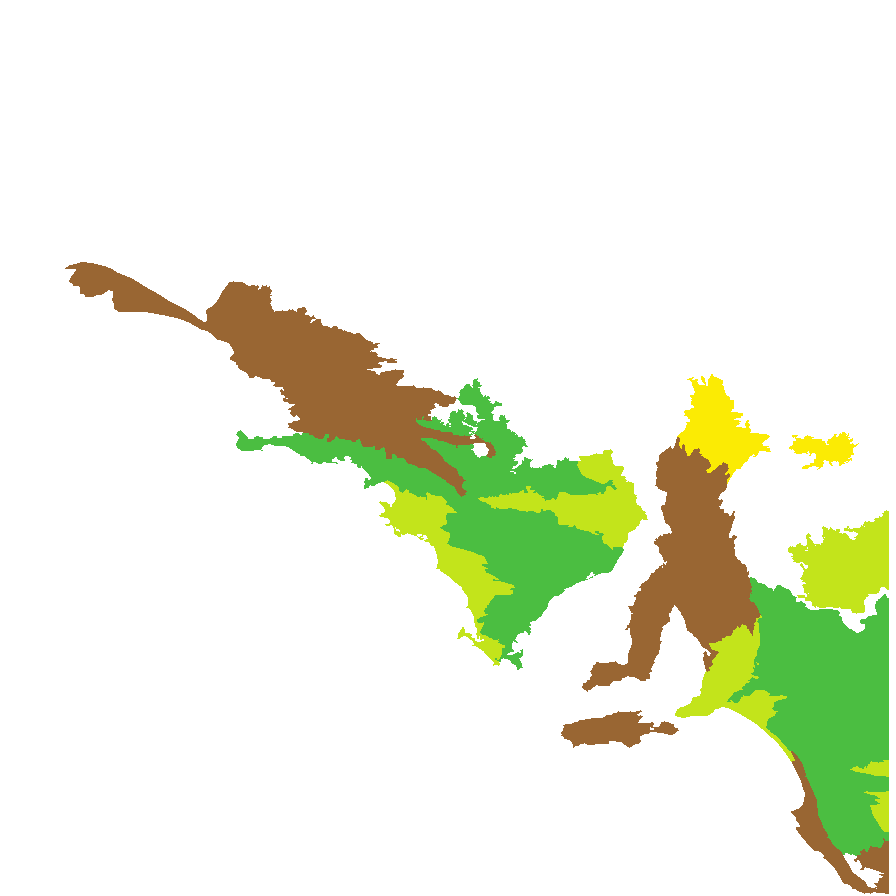
Botanical art
Prior names
Parakeelya granulifera
Talinum nanum
Calandrinia pygmaea
Calandrinia neesiana
Etymology
Calandrinia named after Jean-Louis Calandrini (1703-1758), a Swiss scientist, professor of mathematics and philosophy. Granulifera from the Latin 'granum' meaning grain and 'fera' meaning to bear, referring to its granular seeds.
Distribution and status
Found in the southern part of South Australia, growing on sandy and gravelly soils and often associated with granite outcrops in woodland and mallee communities. Also found in Western Australia, New South Wales, Victoria and Tasmania. Native. Common in South Australia. Rare in Tasmania. Uncommon in New South Wales. Common in the other States.
Herbarium regions: Flinders Ranges, Eyre Peninsula, Northern Lofty, Murray, Yorke Peninsula, Southern Lofty, Kangaroo Island, South Eastern, Green Adelaide
NRM regions: Adelaide and Mount Lofty Ranges, Eyre Peninsula, Kangaroo Island, Northern and Yorke, South Australian Murray-Darling Basin, South East
AVH map: SA distribution map (external link)
Plant description
Erect to decumbent annual herb with stems to 5 cm long. Leaves basal and on flower stems; succulent, sessile, oblong or obovoid, sometimes terete and globular, to 12 mm long and 5 mm wide. Inflorescence a spike (erect in fruit), with white to pink flowers. Flowering between August and October. Fruits are black three-sided ellipsoid capsule to 2.2 mm long with numerous seeds. Seeds are brown reniform-ovoid seed to 0.5 mm long and 0.4 mm wide, with a tuberculate surface. Seed embryo type is peripheral.
Seed collection and propagation
Collect seeds between October and December. Collect mature capsules, those that are turning a black and contain dark seeds. Place the capsules in a tray and leave to dry for one to two weeks. Then rub the capsules gently by hand to dislodge the seeds. Use a sieve to separate the unwanted material. Store the seeds with a desiccant such as dried silica beads or dry rice, in an air tight container in a cool and dry place. Seed viability is usually high.
| Location | No. of seeds (weight grams) | Number of plants | Date collected | Collection number Collection location | Date stored | % Viability | Storage temperature |
|---|---|---|---|---|---|---|---|
| MSB | 27,000 (1.1 g) | 50+ | 16-Oct-2007 | MJT142 Eyre Peninsula | 100% |
Number of plants: This is the number of plants from which the seeds were collected.
Collection location: The Herbarium of South Australia's region name.
% Viability: Percentage of filled healthy seeds determined by a cut test or x-ray.